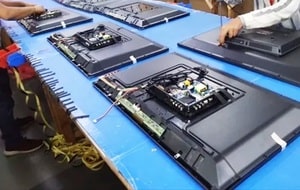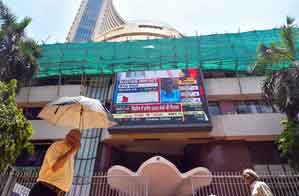To achieve the goal of $500 billion local electronics manufacturing by FY30, the industry must prioritise export growth to emerge as one of the top three global exporters in this domain by 2030, industry players said on Saturday.
The electronics industry is growing at a rapid pace owing to multiple production-linked incentive (PLI) schemes. The country witnessed rapid growth in electronics manufacturing – from Rs 1.9 lakh crore in 2014-15 to Rs 9.52 lakh crore in production in 2023-24 (with an annual compounded growth rate of 17.4 per cent) and 22.7 per cent export growth.
Exports in the electronics manufacturing sector rose substantially from about Rs 38,263 crore in 2014-15 to Rs 2.41 lakh crore at the CAGR of 22.7 per cent — significantly faster than the growth of other export sectors.
Speaking on the occasion of 10 years of the 'Make in India' initiative, Avneet Singh Marwah, CEO of Super Plastronics Pvt Ltd (SPPL), said that after almost two decades, India has once again focused on electronics manufacturing, and the industry is eager to engage with supportive initiatives like the PLI scheme.
“In terms of innovation and design, India is on par with global leaders; the primary challenge has been raw material resource scarcity. However, with initiatives like the PLI scheme, India is poised to become a key player in electronics component manufacturing, which will greatly enhance product development,” he told IANS.
The government has exceeded the overall production target, and has reached Rs 6.61 lakh crore as the total value of production and investment of Rs 9,100 crore, which is again well above the investment.
Arjun Bajaj, Director of the home-grown manufacturer, Videotex, said that expanding into international markets will not only boost revenue but also enhance the global competitiveness of Indian electronics.
“The television sector, in particular, stands to gain significantly from initiatives like the PLI scheme and the proposed reduction in GST from 28 per cent to 18 per cent. With televisions increasingly being viewed as essential household items rather than luxury goods, these measures will lower costs, stimulate domestic demand, and attract more investment in local manufacturing,” Bajaj told IANS.
Additionally, the central government's green signal for establishment of semiconductor manufacturing units is a crucial step toward Atmanirbhar Bharat.
Also, in line with the semiconductors, local manufacturing of display fabs can play a pivotal role in supporting India’s ambitious manufacturing goals while driving economic growth, said industry leaders.
Scaling up manufacturing while generating employment requires a two-pronged approach — embracing advanced technologies and fostering skill development.
By investing in automation and smart manufacturing processes, companies can enhance production efficiency. Simultaneously, upskilling the workforce to meet global industry standards is essential for long-term success. Expanding manufacturing facilities and building stronger local supply chains will create both direct and indirect job opportunities, said the industry players.
Not only in India but also globally, the participation of women in manufacturing has been increasing steadily.
“There is a significant shift in the women workforce numbers as well, which has lead to a greater balance in gender diversity and inclusion. We also see opportunities at high level being offered to women, which was rare previously and was a space dominated by men, especially in sectors such as mobile manufacturing, electronics and auto industries,” said Pallavi Singh Marwah, senior Vice President, SPPL.






Indian stock market opens in red as Israel-Iran tensions rise
The Indian benchmark indices opened sharply lower on Friday as tensions escalated between Israel and Iran. Heaving selling was seen in the auto, IT, Financial service and PSU Bank sectors in the early trade.
Axion 04 mission postponed again after propulsion bay leak; ISRO, SpaceX begin repairs
The highly anticipated Axion 04 mission, which was set to launch on Wednesday after a series of earlier delays, has been postponed once again due to a leak detected in the propulsion bay during a pre-launch test, the Indian Space Research Organisation (ISRO) announced on Wednesday.
Bad weather delays Shubhanshu Shukla's flight to ISS to Wednesday: ISRO
Indian astronaut Shubhanshu Shukla's historic flight to the International Space Station (ISS) has yet again been delayed due to poor weather, the Indian Space Research Organisation (ISRO) said on Monday.
Stock market ends in green, Bank Nifty hits new all-time high of 57,000
The Indian stock markets closed in the green on the first trading day of the week, as Bank Nifty hit a new all-time high of 57,000 on Monday, reflecting strong sentiment and momentum in the banking sector.
World’s largest container ship MSC IRINA arrives at Adani’s Vizhinjam International Seaport
In a historic feat, the world’s largest container ship MSC IRINA arrived at Adani Group's Vizhinjam International Seaport on Monday, which will be berthed till Tuesday.
Indian stock market opens in green, IT and PSU banks lead
The Indian benchmark indices opened higher on Monday amid positive global cues, as buying was seen in the IT, PSU banks and auto sectors in the early trade.
India now has 1.76 lakh registered startups, 118 unicorns: FM Sitharaman
The number of registered startups has reached 1.76 lakh in the last 11 years, with 118 unicorns (startups with $1 billion valuation and above), thus fueling youth entrepreneurship, Finance Minister Nirmala Sitharaman said on Friday.
Adani Ports secures Rs 5,000 crore via 15-year non convertible debenture
Adani Ports and Special Economic Zone Ltd (APSEZ) on Friday said it has successfully raised Rs 5,000 crore through a 15-year Non-Convertible Debenture (NCD).